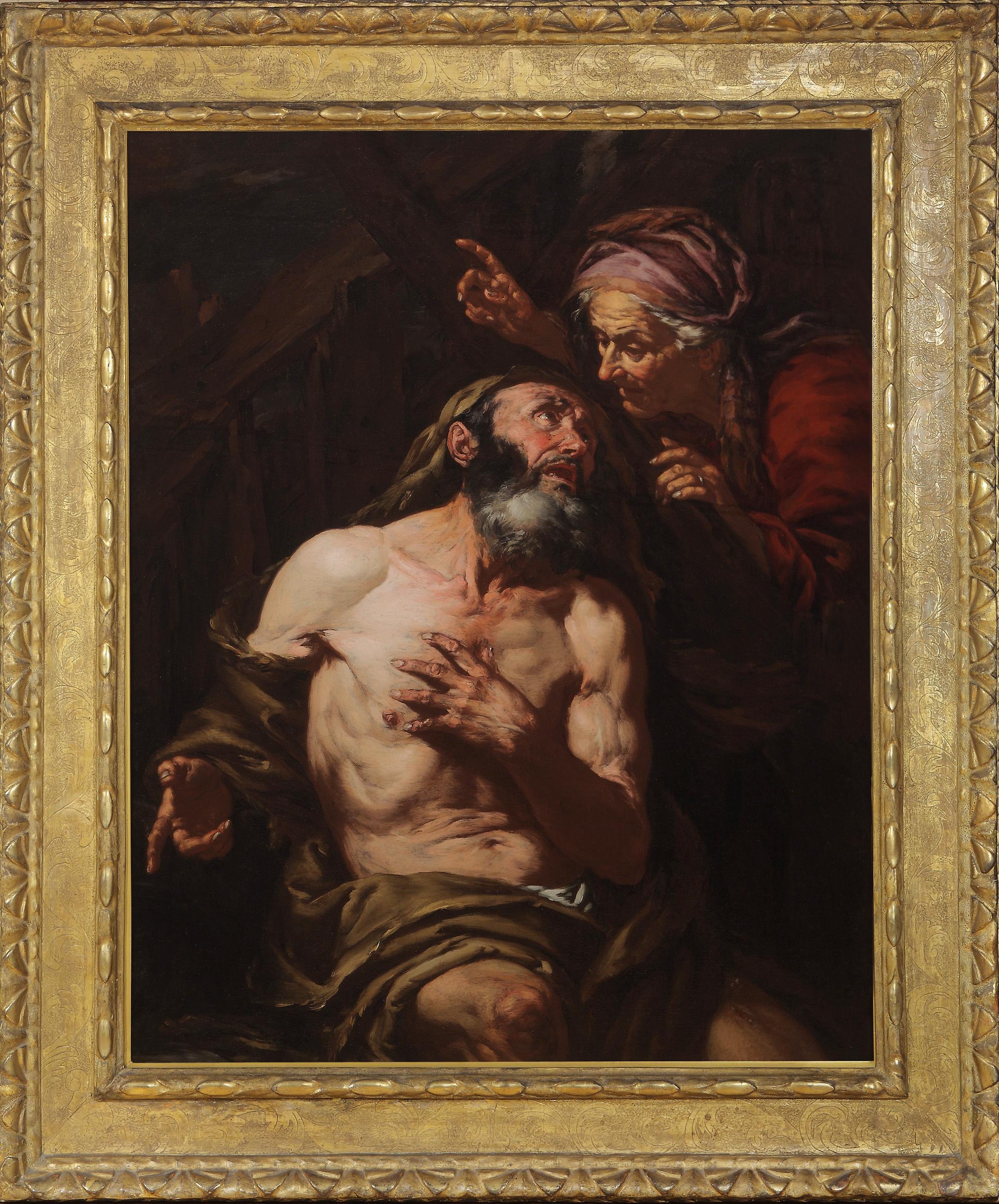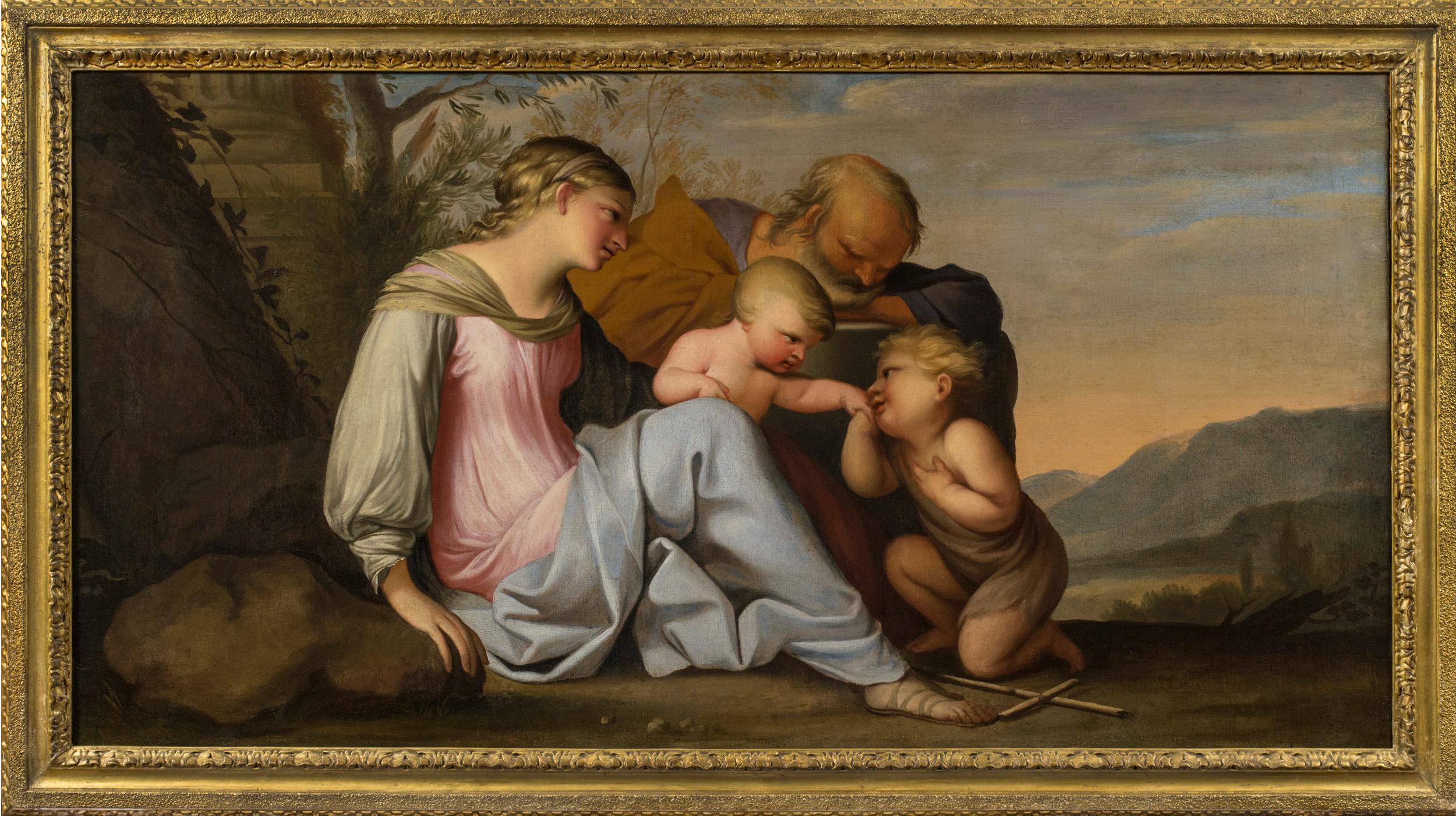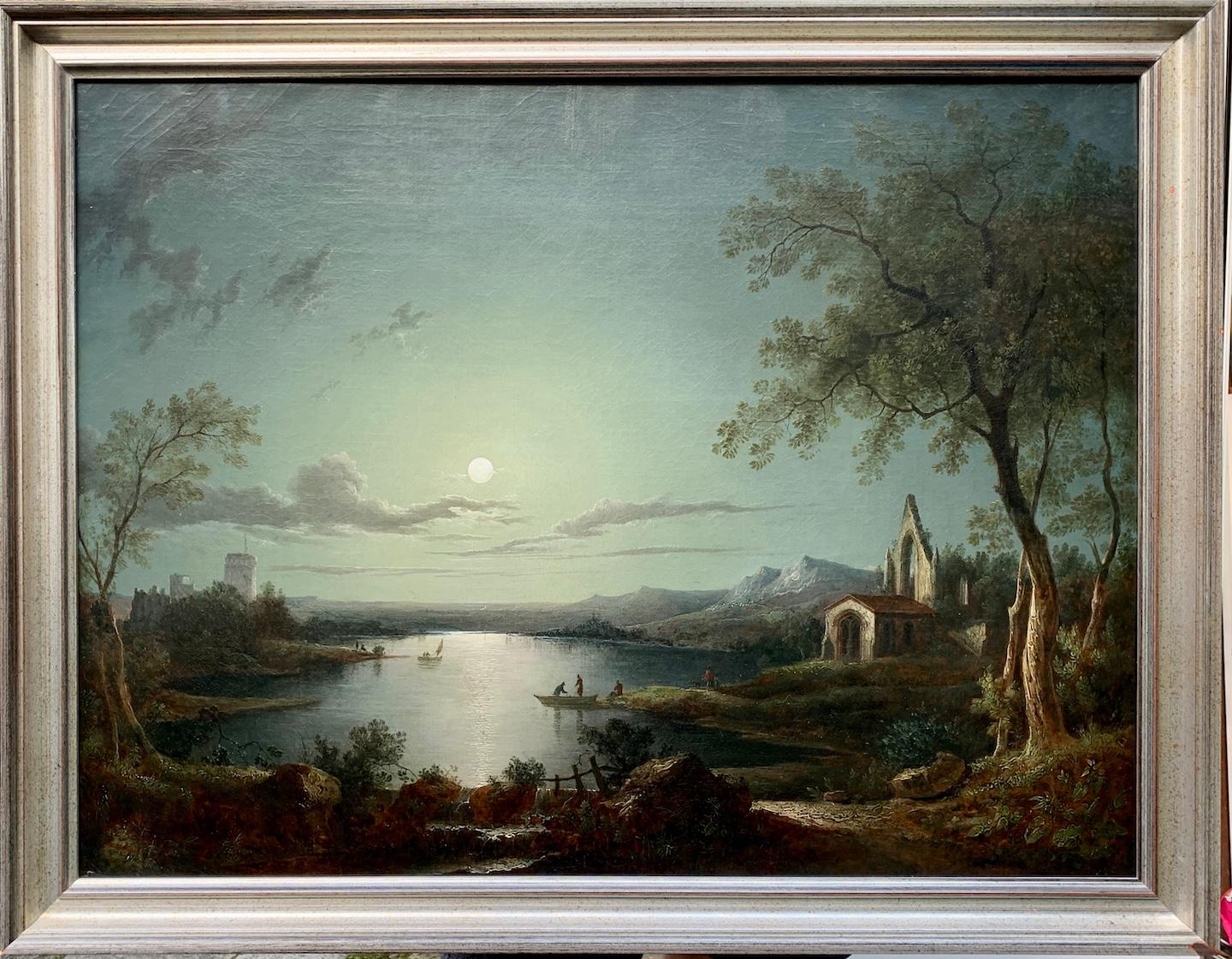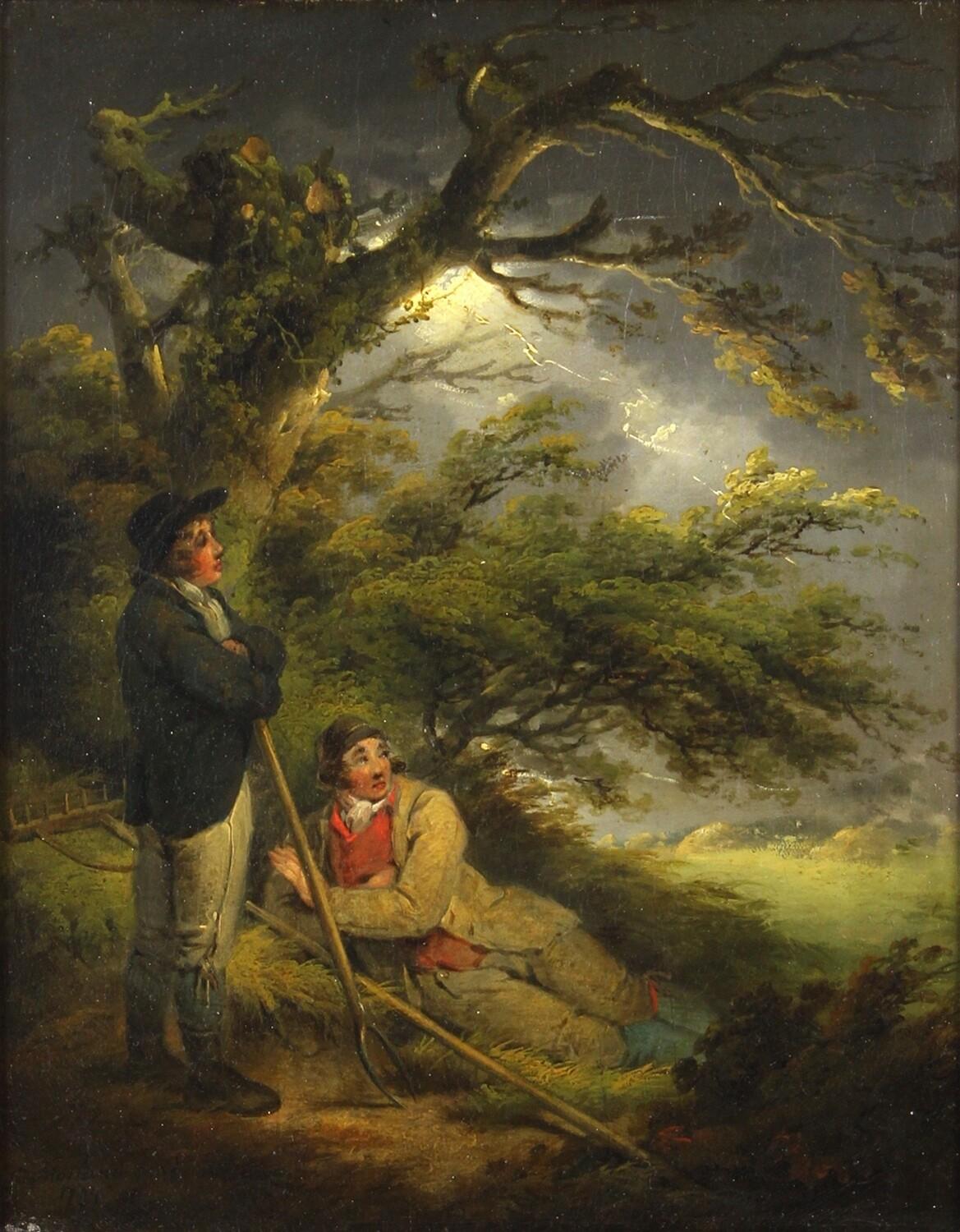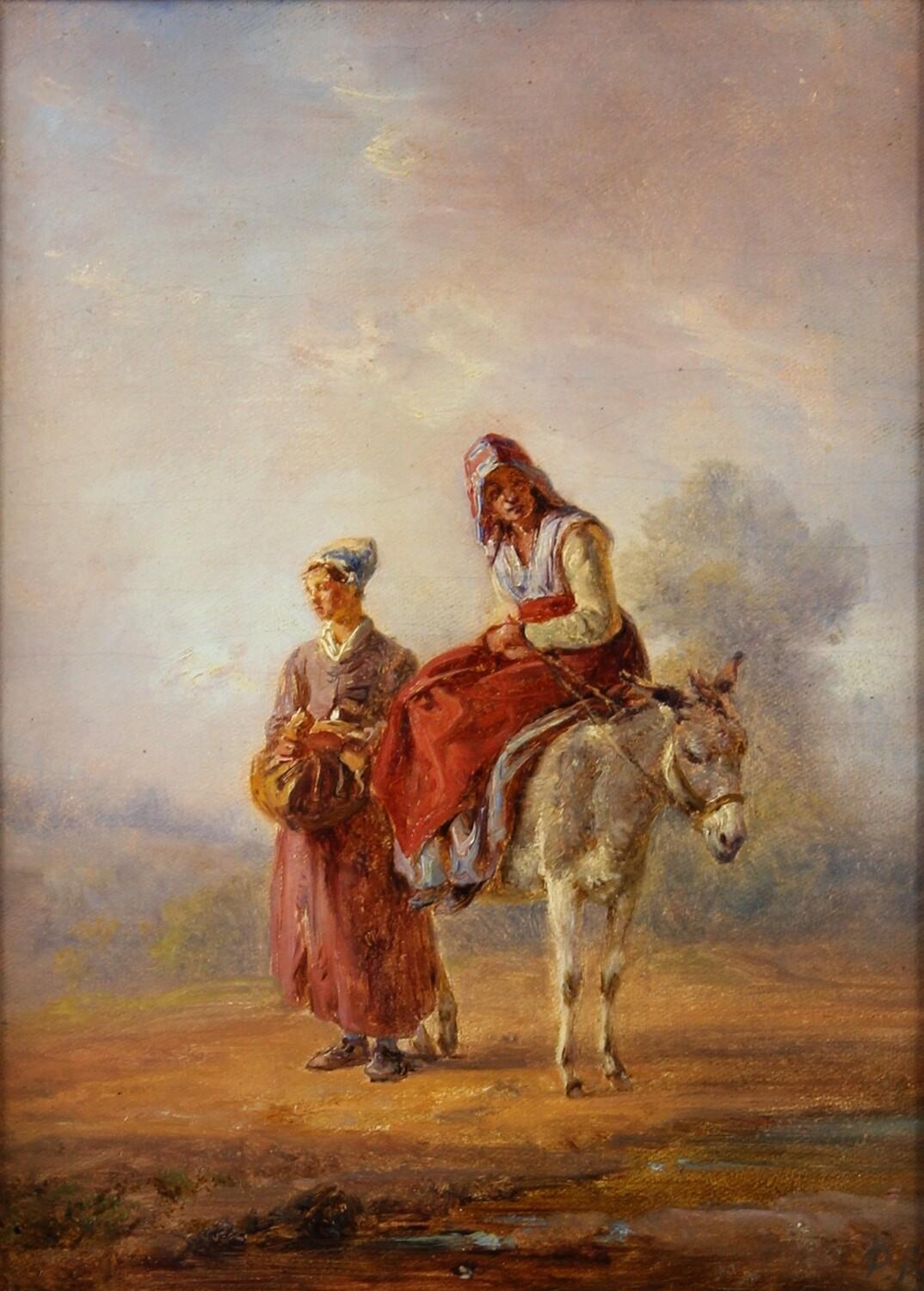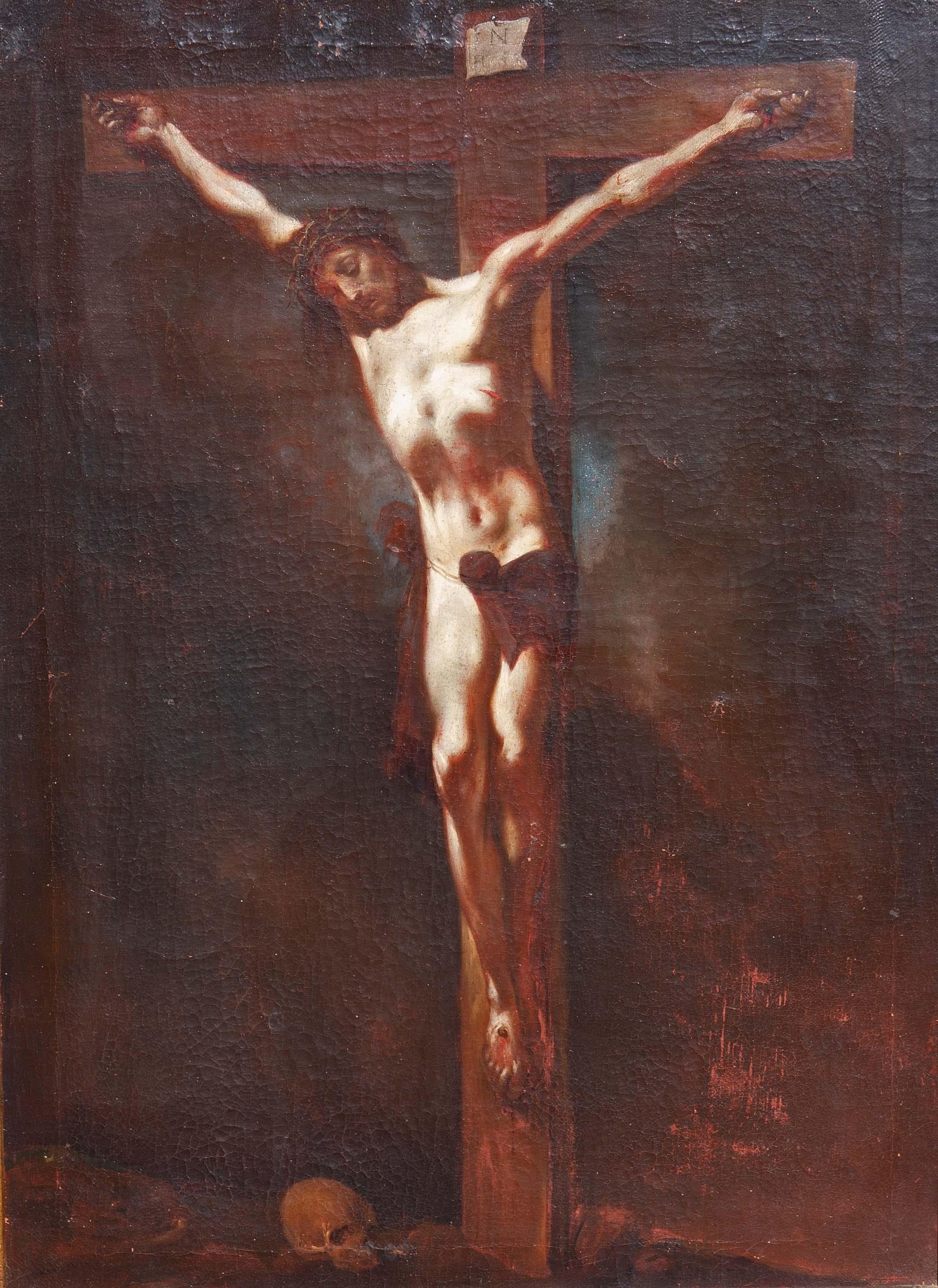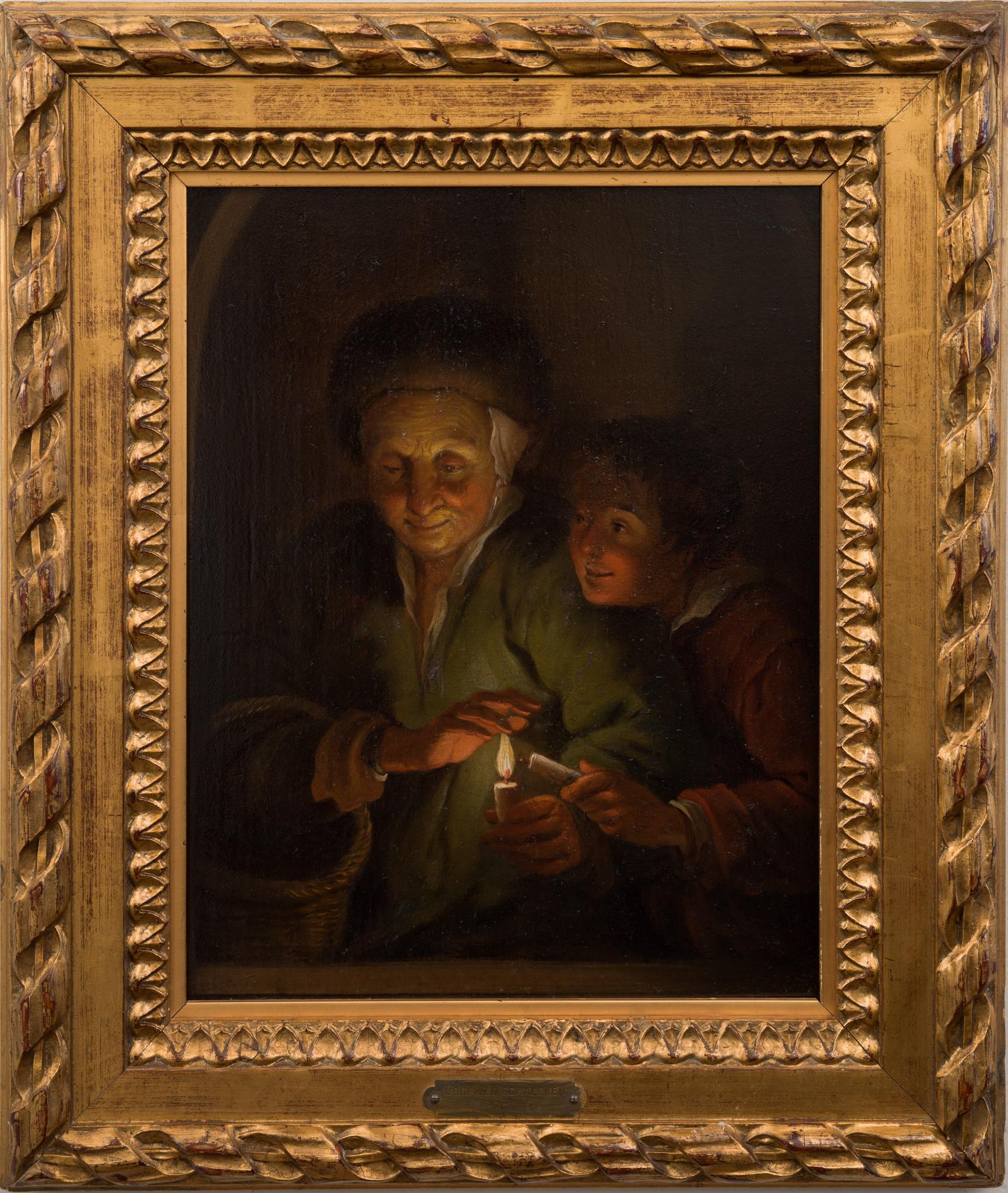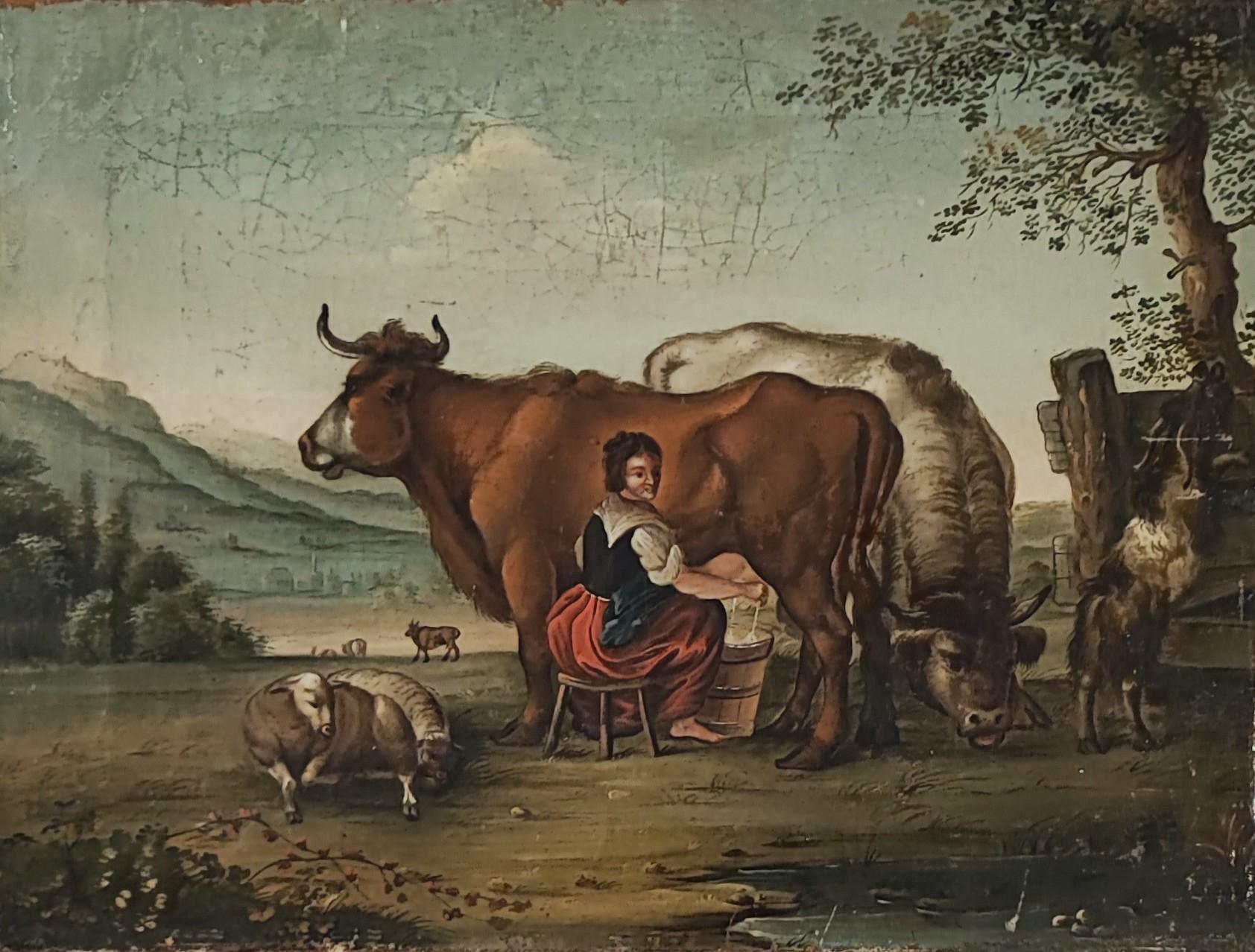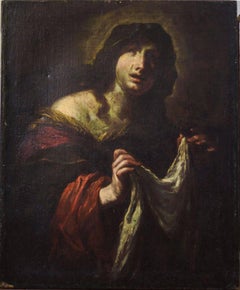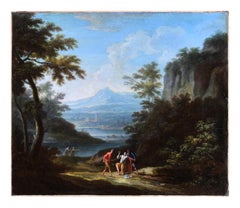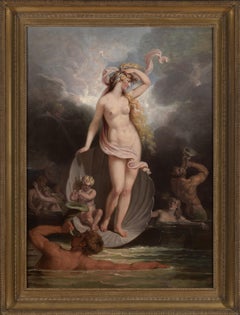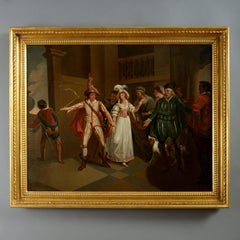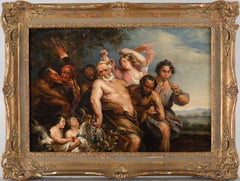
Carnival Scene - Oil Painting by North European Artist After Van Dyck
View Similar Items
Want more images or videos?
Request additional images or videos from the seller
1 of 5
UnknownCarnival Scene - Oil Painting by North European Artist After Van Dyck End of 18th Century
End of 18th Century
About the Item
- Creation Year:End of 18th Century
- Dimensions:Height: 14.18 in (36 cm)Width: 20.48 in (52 cm)Depth: 0.56 in (1.4 cm)
- Medium:
- Movement & Style:
- Period:
- Condition:Insurance may be requested by customers as additional service, contact us for more information.
- Gallery Location:Roma, IT
- Reference Number:Seller: M-1012291stDibs: LU65034234641
About the Seller
4.9
Platinum Seller
These expertly vetted sellers are 1stDibs' most experienced sellers and are rated highest by our customers.
1stDibs seller since 2017
6,693 sales on 1stDibs
Typical response time: 2 hours
More From This SellerView All
- Martyrdom of Saint Stephen- Painting attr. to Vincent Adriaenssen- 17th CenturyLocated in Roma, ITLandscape with martyrdom of Saint Stephen is an old master artwork realized in 17th century. Mixed colored oil painting on canvas. Includes coeval gilded frame cm. 148x196. The artwork is attributed to Vincent Adriaenssen called il Manciola (Antwerp, 1595 - Roma, 1675) Among the painters who worked in the first half of the seventeenth century it is possible to indicate only the Neapolitan Scipione Compagno (1624-1680) as the author of scenes of martyrs set within a landscape or a view such as, for example, the Martyrdom of Saint Stefano recently hesitated at the Ansorena in Madrid on June 16, 2021. It should be noted, however, that the landscape represented in the painting examined here, characterized by luxuriant vegetation, meticulously represented "in the Flemish style", shows differences with the typical settings of the paintings di Compagno, characterized above all by urban views, visionary architectures or rather arid vegetation. Even the refined figures, so elongated and lanky, represented in our painting, in particular the group of knights in the foreground on the right, are not reflected in the production of the Neapolitan painter. These elements, to which we add the depiction of the Eternal Father amidst the clouds and the detail of the dog in profile in the foreground, instead recall a painter mainly known as a battle soldier, but who was also the author of many works depicting episodes from ancient Rome set within luxuriant landscapes, or rather Vincent Adriaenssen known as Manciola, a painter from Antwerp whose figure has been shed light thanks to recent studies. The group of horsemen represented to the right of the examined painting is, in fact, comparable with other groups on horseback present in numerous works by Manciola such as, for example, in the Triumph of Caesar (Rome, Babuino, 23-03-2010; formerly Florence, Collection Privata, 2006), while similar elongated and somewhat lanky figures, dressed in red, yellow, blue and white, can be found in the three paintings conserved at the Cassa di Risparmio di Pesaro, which in the past were erroneously attributed to the Umbrian painter Francesco Allegrini...Category
17th Century Old Masters Landscape Paintings
MaterialsOil
- Saint VeronicaBy (After) Simone PignoniLocated in Roma, IT18th c. Italian school Santa Veronica, after Simone Pignoni. Period copy by an unknown hand of the original oil painting by Pignoni. The original Pignoni painting was conserved in the Church of S. Eusebio in Cegliolo (Cortona) and now in the permanent collection of the Musée Fabre in Montpellier, France. In the Musée des Beaux-Arts of Marseille, there is another period copy by an unknown hand, considered of lesser quality than the current example. Simone Pignoni (Florence, 1611-1698), one of the most important exponents of the Florentine School, was characterized by a soft touch. His formation with Francesco Furini...Category
Late 17th Century Old Masters Figurative Paintings
MaterialsCanvas, Oil
- Two Arcadic Landscapes - J.F. Van Bloemen (follower of) - Oil on CanvasBy Jan Frans van Bloemen (Orizzonte)Located in Roma, ITTwo Arcadic Landscapes are a couple of original oil paintings by a follower of the Flemish artist, Jan Frans Van Bloemen (1662-1749). These old master's original paintings represen...Category
Early 18th Century Old Masters Landscape Paintings
MaterialsOil
- The Inappetent Owl - Grotesque Scene with Owl and Swan - Late 17th CenturyLocated in Roma, ITTwo masterpieces by the Master of the Fertility of the Egg, nearly impossible to find in homogeneous pairs on the private market, both in terms of style and dimensions. They represen...Category
Late 17th Century Old Masters Figurative Paintings
MaterialsCanvas, Oil
- Still Life with Fishes and Oysters - Oil on Canvas - 17th CenturyLocated in Roma, ITStill life with fishes and oysters is an original oil on canvas realized in the 17th Century by Neapolitan School Master. Impressive in size as well as for its vivid representation o...Category
17th Century Old Masters Still-life Paintings
MaterialsOil
- Battle Scene - Painting - 18th CenturyLocated in Roma, ITBattle Scene is an original old masters' artwork realized in the 18th century. Mixed colored oil painting on canvas. The artwork includes frame: 58 x 90 cm.Category
18th Century Old Masters Figurative Paintings
MaterialsOil
You May Also Like
- Portrait of a Lady, After Sir Peter Lely (1610-1680) Oil PaintingBy After Sir Peter LelyLocated in Uppingham, GBOil Painting After Sir Peter Lely (1610-1680) Portrait of a Lady Housed in a Lely gold Leaf Frame. Peter Lely: In 1647 he became a member of the Pain...Category
17th Century Old Masters Portrait Paintings
MaterialsOil
- 18th century allegorical painting of The Triumph of BeautyLocated in London, GBExhibited: London, Royal Academy, 1800, no. 93 What was happening in British history painting in around 1800? In recent discussions of the emergence of a British School of history painting following the foundation of the Royal Academy in 1768, this is a question which is rarely posed and one which is not easily answered. Examination of surviving Royal Academy exhibition catalogues reveals a profusion of artists’ names and titles, few of which remain immediately recognizable, whilst endeavours to explain the impact of exhibition culture on painting - such as the 2001 Courtauld show Art on the Line - have tended to focus on the first and second generation of Royal Academician, rather than young or aspiring artists in the early nineteenth century. This makes the discovery and identification of the work under discussion of exceptional importance in making sense of currents in English painting around 1800. Executed by Edward Dayes...Category
18th Century Old Masters Figurative Paintings
MaterialsCanvas, Oil
- Early 18th Century Oil After Francis Wheatley, The Taming of The ShrewLocated in London, GBAfter Francis Wheatley, circa 1800 The Taming of the Shrew Oil on canvas; held in a period style frame. Dimensions refer to size of frame Artists and patrons in the eighteenth ...Category
Early 1800s Old Masters Figurative Paintings
MaterialsOil
- Portrait of Jean-Baptiste Greuze, painted on linen by his daughter Anna GreuzeLocated in PARIS, FRThis replica of the last self-portrait of Jean-Baptiste Greuze painted in 1804, executed by his daughter Anna at her father's side and recently rediscovered, provides us with a poignant image of the great artist, represented with panache despite the disillusions of life. 1. Jean-Baptiste Greuze Jean-Baptiste Greuze was the sixth child of a roofer from Tournus and retained a certain rusticity in his behaviour from his provincial childhood, beyond his taste for describing picturesque scenes of the countryside. He initially started training with a little-known painter from Lyon, Charles Grandon, before his genius was recognised in Paris where he became a full-time student of the Académie (of Painting) in 1755. He exhibited his work for the first time at the Salon during the summer of 1755, before leaving on a trip to Italy in the company of Louis Gougenot, abbot of Chezal-Benoît. Upon his return to Paris, Greuze became a prolific painter, participating widely in the Salons held between 1759 and 1765, to which he sent no less than 63 paintings: numerous genre scenes (The Marriage Contract, The Beloved Mother), but also portraits of his family circle, of courtiers and art lovers, or of his colleagues. The Academy closed the doors of the Salons to him in 1767 for not having produced his reception piece within six months of his reception, as was the tradition. He worked actively on this painting (Emperor Severus rebukes Caracalla, his son, for trying to assassinate him ) until the summer of 1769, tackling historical and mythological subjects for the first time. Once this was completed, he was then fully admitted to the Academy, but as a genre painter, and not as an historical painter, which had been one of the greatest humiliations of his life. Greuze then refused any participation in events organised by the Academy or its successor, the Academy of Fine Arts until 1800. Abandoning history painting, he gave a new twist to genre scenes, bringing them closer to history painting, as in this pair of canvases which constitutes some of his masterpieces: The Paternal Curse: The Ungrateful Son and The Paternal Curse: The Punished Son . Married in 1759 to Anne-Gabrielle Babuti, the daughter of a Parisian bookseller, his marriage was unhappy and his wife probably frequently unfaithful. The institution of divorce enabled him to record their separation in 1793, keeping his two daughters Anna-Geneviève, born in April 1762, and Louise-Gabrielle, born in May 1764, with him. Little is known about his daughter Anna except that she was herself a painter and lived with her father until his death. It is likely that most of the paintings she produced up to that date were attributed to her father, whose technique she shared to a great extent, making it extremely difficult to establish an autonomous corpus of her paintings. Greuze died in his studio at the Louvre on March 21st 1805. The attention paid to the expressivity of his characters and the emotional charge they convey enabled Jean-Baptiste Greuze to enjoy immense popularity with the eighteenth-century public, and they still constitute Greuze's true modernity. As the artist said, "I dipped my brush in my heart". Greuze was also an exceptional draughtsman and a portraitist of immense talent and exceptional longevity who painted both the Dauphin (the son of Louis XV and father to Louis XVI) and the young Napoleon Bonaparte. 2. Greuze's self-portraits Greuze was very much influenced by Dutch paintings during all his life. While the source of his inspiration for genre scenes can be found in Gerard Dou...Category
Early 1800s Old Masters Portrait Paintings
MaterialsLinen, Oil
- Herminia and the Shepherds, a painting by Francesco de Mura (Napoli 1696 - 1782)By Francesco de MuraLocated in PARIS, FRIn this masterly painting, Francesco de Mura presents the meeting of Herminia and the shepherds, a famous episode taken from the seventh canto of Torquato Tasso's Jerusalem Delivered...Category
1760s Old Masters Figurative Paintings
MaterialsCanvas, Oil
- Virgin and Child, a paiting by David Teniers the Younger after Palma VecchioBy David Teniers the YoungerLocated in PARIS, FRProvenance: Dukes of Marlborough Collection, Blenheim Palace until its sale at Christie's London on 26 July 1886 (lot 172) English private collection until its sale at Christie's London on 11 December 1992 (lot 363) Erna Weidinger Collection (1923 - 2021) - Austria Literature : Georg Scharf - A list of the pictures in Blenheim Palace - Catalogue raisonné Part 2 - London 1862 (page 166 - number 199 "after Palma Giovane") Charles Davies...Category
1750s Old Masters Figurative Paintings
MaterialsOak, Oil
Recently Viewed
View AllMore Ways To Browse
Indian Summer
1920s Art Women
L Red White And Blue
Everly Brothers
Bruno Art Work
Clown Painting
Clowns Clown Paintings
French Pastel Portraits
Woman On Chair
Battle Scene Paintings
Gold Leaf Medium Paintings
Nude Women Oil Painting
Framed Miniature Oil Paintings
Classical Pop Art
Girl Dress Painting
Oil Portrait 1965
Brussels Period
La Francaise
